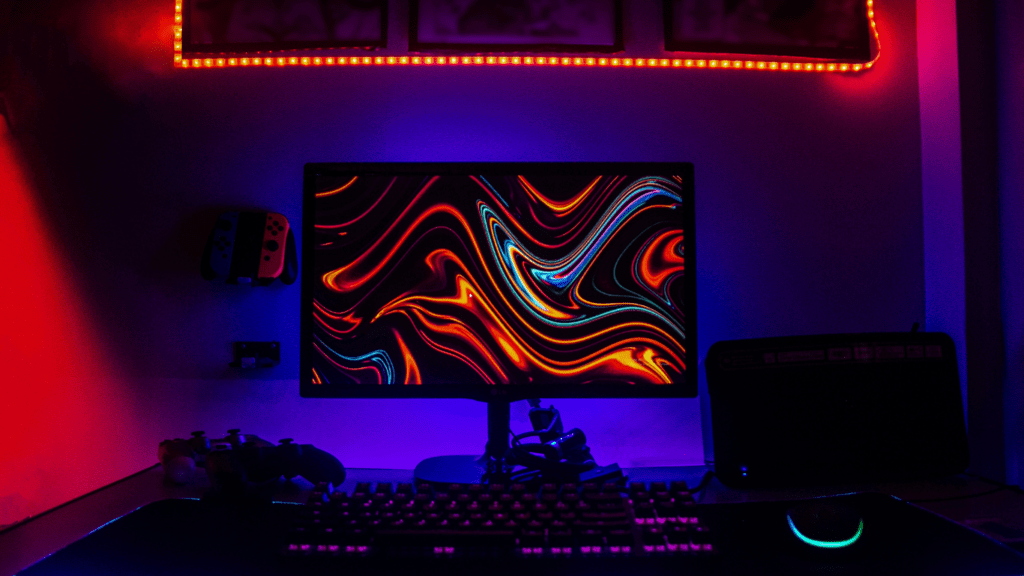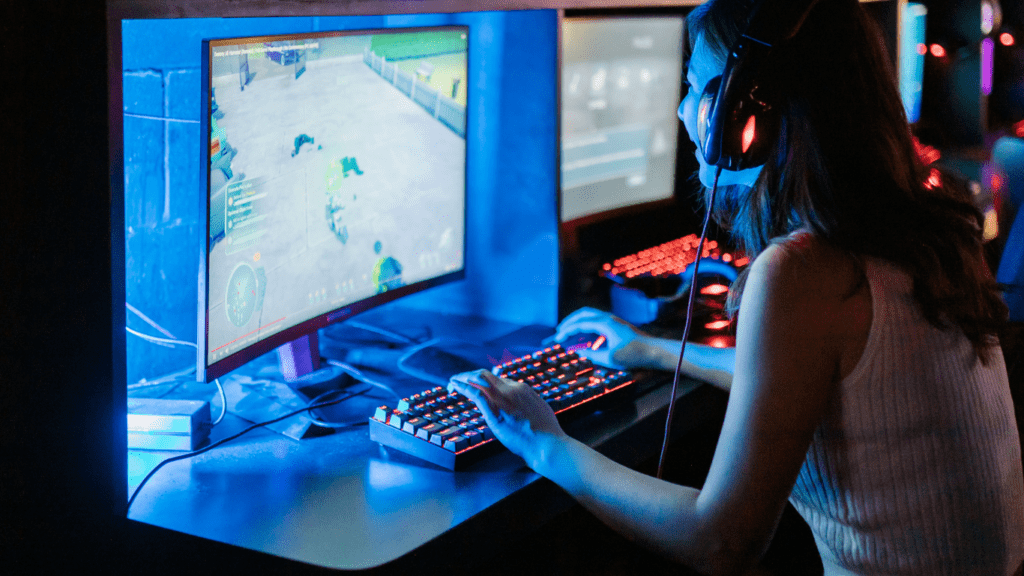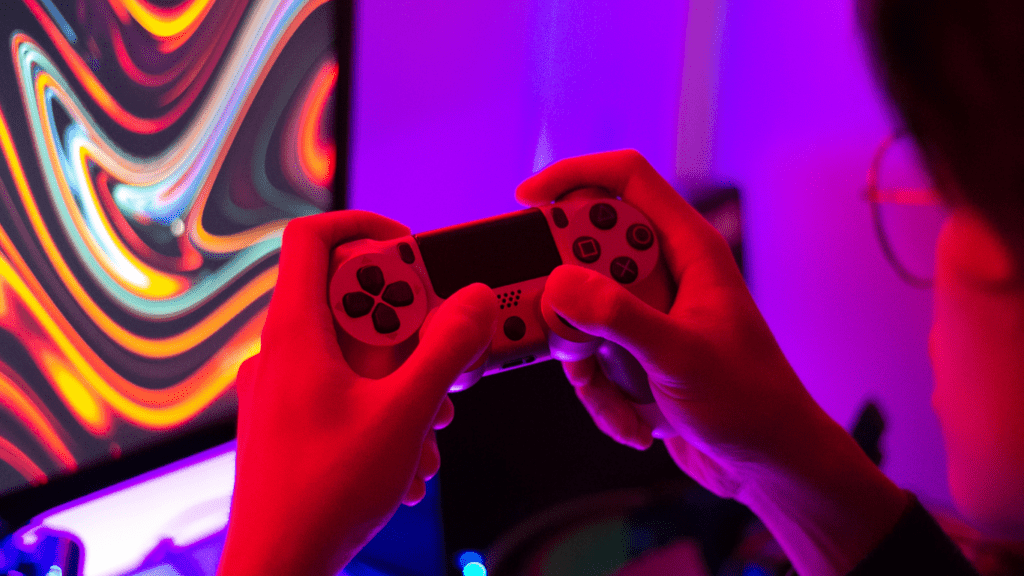Are you ready to elevate your PC gaming experience to the next level? When it comes to choosing the best monitor for your setup, there are a few key factors to consider. As a seasoned gamer, I understand the importance of having a monitor that not only delivers stunning visuals but also enhances your gameplay.
In this article, I’ll share expert insights on how to select the perfect monitor for your PC gaming needs. From refresh rates to resolution, I’ll guide you through the essential features that can make a significant difference in your gaming sessions.
Whether you’re a competitive gamer or a casual player looking for immersive graphics, finding the right monitor is crucial for maximizing your gaming enjoyment.
Understanding Monitor Specifications for Gaming
When it comes to choosing the best monitor for PC gaming, understanding monitor specifications is key to ensuring an optimal gaming experience. As a seasoned gamer, I know the importance of carefully evaluating these specifications to make an informed decision.
Here, I’ll delve into the essential monitor specifications you should consider before making your purchase.
Refresh Rate
The refresh rate of a monitor refers to how many times the screen refreshes the image per second. A higher refresh rate results in smoother gameplay, especially in fast-paced action games. For competitive gaming, a refresh rate of at least 144Hz is generally recommended to minimize motion blur and screen tearing.
Keep an eye out for monitors with higher refresh rates for a more responsive gaming experience.
Resolution
Resolution determines the clarity and detail of the images displayed on the monitor. The standard resolutions for gaming monitors are 1920×1080 (Full HD), 2560×1440 (Quad HD), and 3840×2160 (4K Ultra HD).
Higher resolutions offer sharper visuals but require more powerful hardware to run games smoothly. Consider your PC’s graphics card capabilities when choosing the resolution of your gaming monitor to ensure optimal performance.
Panel Technology
There are different panel technologies used in monitors, with the most common ones being Twisted Nematic (TN), In-Plane Switching (IPS), and Vertical Alignment (VA) panels. TN panels are known for their fast response times, making them ideal for competitive gaming.
IPS panels offer better color accuracy and wider viewing angles, making them great for immersive gaming experiences. VA panels provide high contrast ratios, delivering deep blacks and vibrant colors. Choose a panel technology based on your priorities for gaming performance and visual quality.
Response Time
Response time measures how quickly a pixel can change from one color to another. A lower response time reduces motion blur, enhancing the clarity of fast-moving images in games. Aim for a monitor with a response time of 5ms or lower for smooth gaming visuals.
Keep in mind that faster response times are crucial for competitive gaming, where split-second reactions can make a significant difference in gameplay. By understanding and considering these monitor specifications, you can make an informed decision when selecting the best monitor for your PC gaming setup.
Evaluate your priorities for gaming performance, visual quality, and budget to find a monitor that meets your specific needs and enhances your overall gaming experience.
Factors to Consider When Choosing a Gaming Monitor
When selecting a gaming monitor, it’s crucial to focus on specific factors that can significantly impact your gaming experience. Here, I’ll delve into key considerations such as refresh rate and response time, as well as resolution and screen size, to help you make an informed decision.
Refresh Rate and Response Time
When it comes to gaming monitors, the refresh rate and response time are vital aspects to consider. The refresh rate determines how many frames per second the monitor can display, with higher rates leading to smoother gameplay.
For competitive gaming, a refresh rate of at least 144Hz is recommended to ensure seamless and fluid visuals. Additionally, response time plays a crucial role in minimizing motion blur and ghosting, particularly in fast-paced games. Opt for a monitor with a low response time of 5ms or less for optimal clarity during intense gaming sessions.
Resolution and Screen Size
Resolution and screen size are equally important factors to contemplate when choosing a gaming monitor. The resolution indicates the number of pixels a monitor can display, affecting the level of detail and sharpness in graphics.
Popular options include Full HD (1920×1080), Quad HD (2560×1440), and 4K Ultra HD (3840×2160), each offering varying degrees of visual fidelity. Higher resolutions demand more powerful hardware to deliver smooth performance. Moreover, screen size influences your gaming experience, with larger screens providing immersive gameplay but potentially requiring more desk space. Consider your preferences and setup constraints to strike the right balance between resolution and screen size for an optimal gaming setup.
Types of Panels for Gaming Monitors
When selecting a gaming monitor, understanding the different panel types is crucial as they directly impact your gaming experience. There are three main panel technologies commonly used in gaming monitors:
- Twisted Nematic (TN) Panels: TN panels are known for their fast response times, making them ideal for competitive gaming where every millisecond counts. These panels offer high refresh rates and are generally more budget-friendly compared to other panel types. While TN panels excel in response time, they may have limitations in color accuracy and viewing angles.
- In-Plane Switching (IPS) Panels: IPS panels provide excellent color accuracy and wider viewing angles, delivering vibrant and true-to-life visuals. Gamers who prioritize image quality and immersive visuals often opt for IPS panels. Although IPS panels offer superior color reproduction, they typically have slightly slower response times compared to TN panels.
- Vertical Alignment (VA) Panels: VA panels strike a balance between the speed of TN panels and the image quality of IPS panels. These panels offer high contrast ratios, providing deeper blacks and better color uniformity than TN and IPS panels. Gamers who value both performance and visual quality can benefit from VA panels’ combination of fast response times and rich colors.
Each panel type has its strengths and weaknesses, so consider your gaming preferences and priorities to choose the panel that best suits your needs. Whether you prioritize speed, color accuracy, or a balance of both, selecting the right panel type plays a significant role in enhancing your overall gaming experience.
Choosing the Right Features for Your Gaming Monitor
When selecting a gaming monitor, it’s crucial to prioritize features that will enhance your gaming experience. Let’s dive into the key factors to consider to ensure you choose the best monitor for your gaming setup.
01. Refresh Rate:
A high refresh rate is essential for smooth gameplay, especially in competitive settings. For optimal performance, aim for a monitor with a refresh rate of at least 144Hz. This ensures that the on-screen action is fluid and responsive, giving you a competitive edge during intense gaming sessions.
02. Resolution Options:
Consider the resolution that best suits your gaming preferences and hardware capabilities. Common options include Full HD (1920×1080), Quad HD (2560×1440), and 4K Ultra HD (3840×2160). Keep in mind that higher resolutions demand more powerful hardware to deliver a seamless gaming experience without sacrificing visual quality.
03. Panel Technologies:
Choose the panel technology that aligns with your gaming priorities. TN panels offer fast response times and cost-effectiveness, making them ideal for competitive gamers. IPS panels prioritize color accuracy and wider viewing angles, perfect for gamers who value image quality. VA panels strike a balance between performance and visual quality with fast response times and rich colors.
04. Response Time:
Look for monitors with a low response time, ideally 5ms or lower, to minimize motion blur and ensure clarity, especially in fast-paced games. A swift response time enhances your ability to react quickly to in-game events, contributing to a more immersive gaming experience.
05. Screen Size Consideration:
Consider the screen size that fits your gaming setup and personal preferences. A larger screen can enhance immersion but may require more desk space. Balance your desired screen size with practical constraints to optimize your gaming setup.
By focusing on these key features refresh rate, resolution, panel technology, response time, and screen size you can select a gaming monitor tailored to your specific needs and preferences. Each feature plays a critical role in elevating your gaming experience, so choose wisely to enjoy gaming to the fullest.





